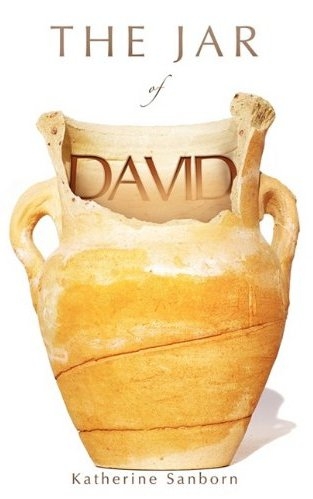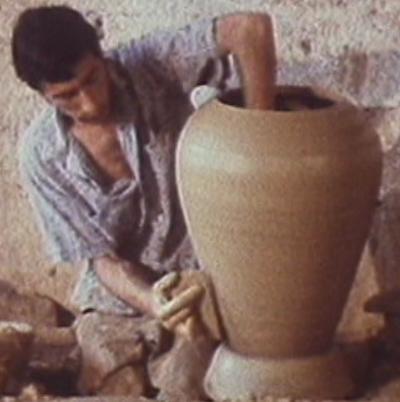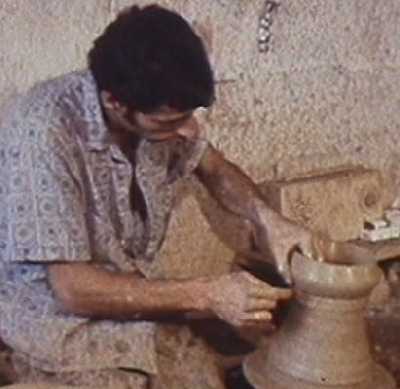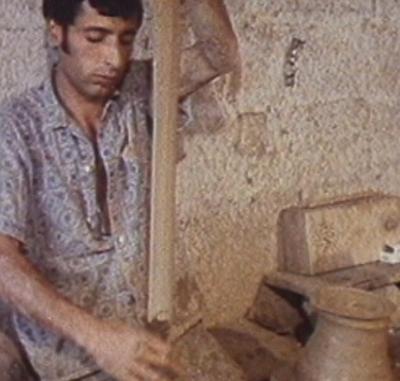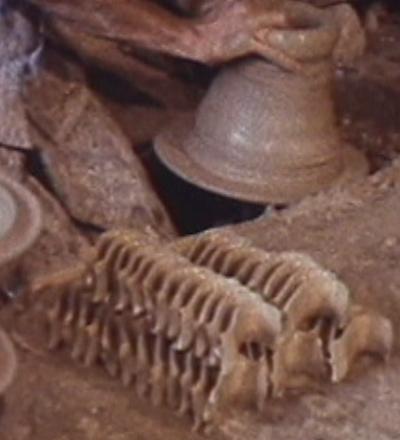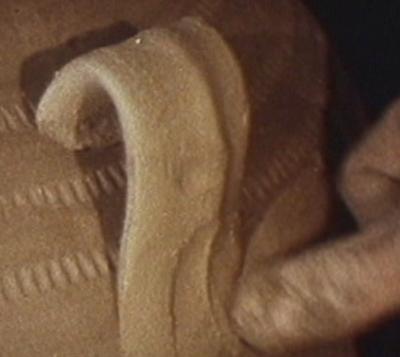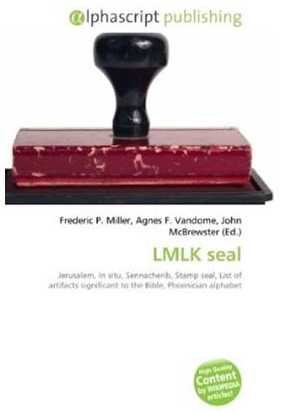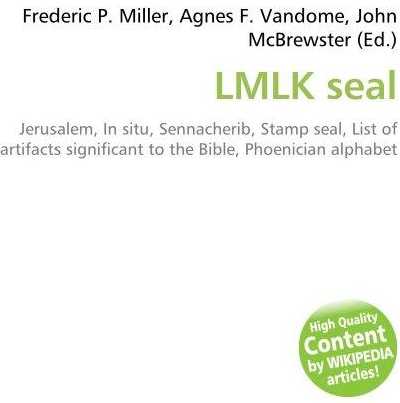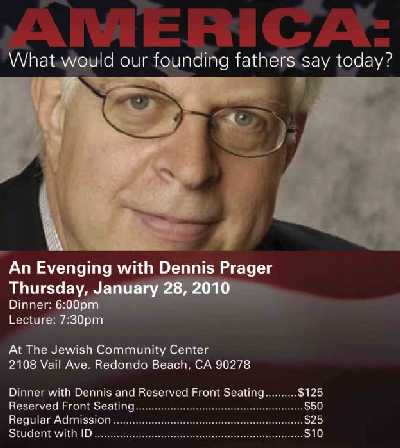In JAOS 130.1, Aren Maeir made the most comprehensive presentation of incised-handle cooking pots (IHCPs) to date. Though a variety of symbols appear on Israelite jars, pre- and post-fired, by far the most numerous are of an "X" or "+" shape, identical in construction with the last letter of the Paleo-Hebrew alphabet, Tau (variously transliterated as Tav, Taw, or Tawv, which evolved into the familiar Tau in the Greek language, equivalent with our English "T" or "t"). Some archeological reports refer to it as a "cross".
Maeir focuses on the pre-fired cooking-pot Taus, and provides Albright's 1932 publication as an early reference, but the landmark 1902 work by Bliss and Macalister provided examples from the Shephelah as well, describing them as "nail marks". Here is a photo of a rare, intact, but unprovenanced IHCP from the antiquities market (presently unknown location):
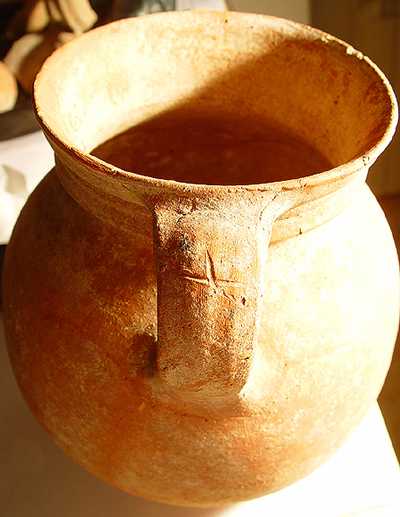
Maeir also illustrates the first known map showing 10 sites in Israel where they have been found. When announcing his JAOS article on his Gath blog, Maeir mentioned a new specimen found this year at Gath/Safi (where he directs excavations), which adds to the Bliss/Macalister handles found at Tell es-Safi and Tell Zakariya.
I thought it was odd to see Gibeon and Tell en-Nasbeh absent from his map, considering that a tremendous quantity of other marked jar handles had been excavated there, so I searched the excavation reports, and indeed found specimens not just there, but at several other sites doubling the 10 listed by Maeir. Since my time and resources are limited, I decided to make a new map for the LMLK Research website where it can be updated as new discoveries are reported (the one shown here is intentionally lo-res to simply preserve the general appearance of my original version).
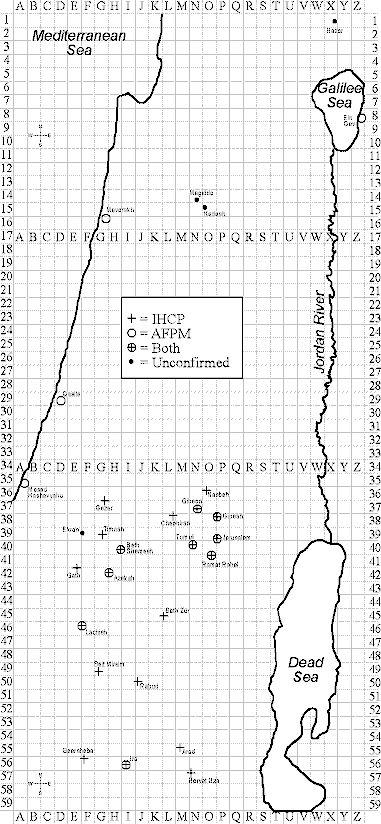
Numerous other handles throughout Israel contain Plus-mark incisions made after the jar had been fired, so I thought it would be helpful to show them on the same map, and distinguish them (AFPM = after-firing Plus mark) from the pre-fired ones on Judean cooking pots. Nor do they always appear on handles, but sometimes on the jar's body, or the underside of a dish, or on a tool; but I decided to restrict my presentation to those appearing on visible regions of jars, since those were obviously intended to convey important meaning.
While studying the Gibeah publications, I noticed an AFPM on the same handle as a Rosette stamp (type III.A.12). In my LMLK vol. 1 book (Grena 2004 pp. 99-100), I defined these as "Plus marks", citing several specimens. On the Rosette handle, the mark is located a few inches away from the stamp, but on each of the LMLK handles, it overlaps the stamp. There's a possibility that these facts bear some significance, but there are still too few to speculate with confidence.
During my research this past week, I was shocked to see how many of the so-called "thumbprint" handles have been excavated at various sites. Yosef Garfinkel shared some photos of the prodigious assortment excavated at Khirbet Qeiyafa, & personally, I believe they were impressed with a device (as part of a cultic bureaucratic ritual involving a wand or scepter such as the well-known type that bear pomegranates), not with fingers, but I've never examined any of them in person, so I'll defer to Hoo-Goo Kang at The Hebrew University (of Jerusalem) who will be publishing a landmark article on these handles.
I struggled with developing a typology by which to formally classify all these marks:
A (after/post fired)
B (before/pre fired)
B (body)
H (handle)
R (rim)
U (underside)
S (sharp-gouge blade)
W (wide-gouge chisel)
B (bowl)
C (cup)
D (dish)
J (juglet or jar w/ 1 handle)
P (pot, cooking)
S (storage jar w/ >1 handle)
T (tool or implement)
# (checkerboard)
^ (Gimel or Gamma)
| (stroke)
+ (plus)
8 (double-axe or hourglass)
k (3-branch Kaf)
O (thumbprint or round device)
w (Shin)
But due to lack of details in the published reports, & lack of time on my part, I decided to just lump them into the 2 aforementioned groups (the specific ones Maeir studied [IHCPs], & all the other jars & handles bearing post-fired incisions [AFPMs]). Besides, some of the incisions are so strange & inconsistent that they would defy any standardized classification.
Maeir made a keen observation that when the IHCPs are found on intact vessels, they almost always appear on only 1 of the 2 handles; the notable exception being one where the jar also bore an incised name. Had this specimen appeared on the antiquities market instead of being from a scientific excavation, it would've raised suspicions, so we should all be grateful for the timely work archeologists do in the field. I did not see any additional specimens of this unusual configuration in any of the other ones I found.
The JAOS article's bibliography lists 182 publications (!) because Maeir doesn't simply list the handles, but delves into their meaning, & the various interpretations made by scholars over the past century. My own bibliography below provides additional sources for handles found at other sites. Note that I did not visit any libraries for this research; the info I gleaned came from snippets of publications I obtained specifically for my LMLK research. So even though I expanded Maeir's findings, please don't interpret my results as being conclusive or exhaustive. There are many more to be found, & not just at the 4 high-probability sites shown on my map (Ekron, Hazor, Kedesh, & Megiddo).
To give you a feel for how these artifacts have been reported in the archeological publications, I'd like to quote from some of them as I document the places & quantities shown on the new map:
Azekah & Gath via Bliss 1902: I only have their plate 56.54 (unknown quantity found at Zakariya & Safi), & 56.57 & 56.61 (unknown quantity found only at Zakariya), not their text (if there was any).
Beit Mirsim via Albright 1932: "Cooking pots of EI II found in our site often have a cross (tau) incised on one of the handles. This incised tau is found in approximately one-fourth of the cooking pots, either entire or in sherds, and perhaps was the factory mark of a town which manufactured them.[p. 81] ... In fig. 15 are collected specimens of incised potters' marks and potters' stamps. The former consist of a pentagram, a double-axe, an archaic teth (or a wheel), and a tau. The first three are all rare; the fourth is extremely common on the handles of cooking pots. The other stamps are in part well-known from the mounds of the Shephelah. It may be possible some day to apportion these potters' marks among the various places attached to the potters' guilds. ... One wonders whether there may not have been two rival groups of potters' guilds, one employing variations on the rosette theme, the other variations on the tau and samek themes.[p. 88]"
Maeir 2010: "Although the IHCP is quite common in the archaeological assemblages from late Iron Age Judah, Albright's claim that these markings appear on approximately one-quarter of the cooking pots is exaggerated, based on the number of published examples of marked and unmarked sundry late Iron Age cooking pots from various Judahite sites (note, e.g., Shoham [2000: 110], who publishes 163 such cooking pot handles among the hundreds of cooking pots from Shiloh’s excavation in the City of David).[p. 46]" (Note: Some of my present quantities shown on my corpus are bare minimums since I have not studied all the published reports, particularly for Jerusalem where the actual total may already be way into the hundreds, as Maeir alludes.)
Beth Shemesh via Grant 1929, p. 206: "No. 3 Mar. 12. Jar Handle. With mark; dark gray, scratched after firing; surf. x. E." The crude AFPM drawing is on p. 213, labeled as City Debris. AASOR 38 references "AS IV, Pl. LXIV:27.", which I do not have a copy of, but I'm assuming it's an IHCP since that was the discussion context of AASOR 38. (Grant also reports a "cross scratched on [bowl] base" on pp. 131, 135.)
Beth Zur via Sellers 1968 p. 67: "The tau handle example illustrated, Fig. 19:9 (Stratum III, Reg. No. II.3.14 500, Pl. 32a:11, reddish brown, few grits, fairly coarse levigation, brittle), is from a mixed context, but one example was found in Stratum III and all marked handles belonged to the rilled rim type. Since comparable tau handles were found at Tell Beit Mirsim and 'Ain Shems, this could have been the factory mark of the town where they were manufactured, as Albright suggested in 1931. The factory was probably in southern Palestine, perhaps at one of these three sites." See also Pl. 32a.11 (500), 32a.12 (736).
Chephirah via Vriezen 1975, which is in German: "Auf zwei Henkeln, einem von einem Krug und einem von einem Kochtopf, ist eine Topfermarke in den noch feuchten Ton eingeritzt worden; auBerdem wurden auf zwei Scherben eingeritzte Linien gefunden.[pp. 143 & 146]" My rough translation is, "On 2 handles, one of a jug, & one of a cooking-pot, a potter's mark was scratched in the still-wet clay; also 2 incised-line fragments were found." Tafel 15D shows a single IHCP handle, so this is the only one I'm listing on my map & corpus. I'll seek clarification from Dr. Vriezen on the other specimens. If there is a pre-fired plus on a large storage-jar handle, it would be unique as far as I know.
Ein Gev via Mazar et al. 1964 shows 2 distinct, non-overlapping plus marks on the side of a 2-handled jar with painted bands in Fig. 7:8 (Pl. 9F not so clearly), "Jar, pink clay, white and grey, large and small grits, two potters marks, Reg. No. 76/1, No. 8 Locus 11, Stratum III."
Ekron via Gittlen 1985, which is a limited-edition (150 copies) typeset pre-publication signed by the VIP excavators, Seymour Gitin & Trude Dothan. As such, it contains no pottery illustrations, but 2 interesting entries: "MC No. 22, Bucket No. IIISE.29.5, Locus 29001, 7/10/84, Obj. No. 190, potter's marked handle [pp. 214 & 225]. MC No. 91, Bucket No. IIISE.16.64, Locus 16010, 7/30/84, Obj. No. 237, handle with potter's mark. [pp. 208 & 222]" Naveh 1958 Plate 23.C (cf. p. 98) shows some pre- & post-fired incised handles, but no IHCPs or AFPMs per se. One resembles a plus due to the handle's formation, intersected by a pre-fired incision, but it doesn't appear to be a "+" incision. Maybe the other pre-fired Chephirah handle is like this too.
Gibeah via Sinclair 1960: "Do these 'marks' on the handles of the jars have any particular significance? I. Mendelsohn says that 'the various forms of rosette, pentagram, wheel, cross and the letter tau cannot be regarded as ownership marks . . . , but these potter's marks are trade marks, each design belonging to a particular guild of potters.' However, the rosette design which, on the basis of the Gibeah evidence is contemporary with the third class of royal stamps, appears to 'have had royal significance in Judah at this time, as it undoubtedly had possessed in Hittite Asia Minor about 1300 B.C.' and 'it originally seems to have symbolized the Hittite belief that the great king was the incarnation of the sun-god.'[p. 33; he's quoting Mendelsohn & Albright from BASOR 80 p. 21]" Plate 16:B.3,5 are IHCPs; 16:B.9 is the aforementioned AFPM Rosette handle. Lapp 1981 shows "Period 3 Cooking Pots from Silo 36" in Plate 41.1-10, though I could only identify full IHCP Plus marks in 1-3, 5, 8-9. #4 is a small fragment showing only part of a single stroke; #6 & #7 aren't clear enough to discern, though #7 appears to contain a thumbprint depression, possibly along with a Plus mark, so that one definitely deserves further scrutiny, as it could be another rare, unique exception to the rule.
Gibeon via Pritchard 1963: AFPMs on the handle of 1-handled jug (Fig. 26.19; "Field No. P1576, Jug, imitation base-ring ware; buff ware; rim damaged"), & on a 1-handled dipper juglet below the handle where it joins the jar's body (Fig. 41.26; "Plan No. 17, Field No. P3070, Buff ware with cream slip; potter's mark on shoulder. (Class B.1.a. = Piriform Juglet B. Vestigial Ring Base, 1. Marked Shoulder, a. Single Handle"). Though Pritchard 1964 doesn't describe the firing, Fig. 47: 8, 9 clearly show the IHCP style: "Iron Age Houses in Area 17. The pottery from both loci [118 & 121] was uniformly Iron II. Cooking pots (Fig. 47: 8, 9) are of the deep type and have a potter's mark incised on the handle; both probably had a second handle. However, Fig. 47: 14 is definitely a type with one handle [pp. 50-1]. Pottery and Stone Jar from Houses in Area 17, Fig. 47.8, Field No. P1011, Loc. 118, Portion of rim, neck and body of cooking pot; dark brown ware, gray core, white and crystalline grits. Fig. 47.9, Field No. P1015, Loc. 118, Portion of rim, neck and body of cooking pot; reddish-brown ware, light gray core, with white and crystalline grits." And yours truly, Grena 2004, illustrated the extremely rare AFPM on a G2T handle (Fig. 57, described on pp. 99-100; note that I was not given permission to publish its photo online until after I had begun working on my book).
Hazor via Stern 1978 footnote 20: "Hazor II, Pl. LXXVI:1-6; Hazor III-IV, Pls. CLXXXVII:14-18; CLXXXIX:27; CCXXIV:16-9; CCCLXI:3-4, 8-15" See my Mevorakh notes for context. Since I don't have those volumes here, someone else will have to check on their relevance.
Ira IHCPs via Maeir, 2 AFPM via Aharoni 1958 Pl. 16, which also shows 3 smaller handles, but they are too fragmentary & fuzzy to classify. Two of them might be redundant to the ones referenced by Maeir (via Freud 1999 figs. 6.66:7; 6.74:14).
Jerusalem IHCPs via Maeir (I'm adding 2 from the unpublished excavations mentioned in his footnote #2), along with 5 AFPMs from Nadelman 1989 photos 184-8, which are handle fragments, & 1 more from a 2-handled storage jar in pl. 5:1. Also Wilson 1871 for the first Plus mark ever published, which included this remark by Chester, "Another vase-handle, found in the same place, and apparently of the same ware, bears as a potter's mark a cross within a semicircular mark. This cross, it is needless to remark, has no relation to the sign of salvation.[p. 474]" (Note that the same AFPM drawing appears on pp. 152 & 474 of the London edition, & pp. 118 & 369 of the New York edition.) And the 2nd ever (I think) AFPM published by Clermont-Ganneau 1899, "A great number of thick amphora handles, some of them with various marks engraved upon them, both before and after baking, and several bottoms of terra-cotta vases, some bearing cruciform marks. [p. 292 fig. B]" Note that figs. C, D, & E on p. 293 are the bottom of a cup, a tile fragment, & a flat-bottom vase fragment (none of which are being counted as an AFPM).
Kedesh via Stern 1978 footnote 20: "Qudeis, p. 111, Fig. 11:2-3, 5-9; Pl. 3:8-12" See my Mevorakh notes for context. Since I don't have that publication here, someone else will have to check on their relevance.
Lachish IHCPs via Maeir (via Zimhoni 2004), along with AFPMs on 1 of a 4-handled jar fragment (fig. 26.10:3), 1 of a 2-handled jar fragment (fig. 26.9:9), & 2 handle fragments from Aharoni 1975 (Pls. 35:6, 35:8, 45:8, 46:13; cf. p. 17; note that the 4 plates are redundant drawings of the same 2 handles), the famous H4L handle from Ussishkin 1983 (fig. 28:2; pl. 43:1), & an undescribed but clear AFPM on the side of the jar used to illustrate Type 487 by Tufnell 1953 (pl. 95:487).
Megiddo via Stern 1978 footnote 20: "Megiddo I, Pls. 41-42" See my Mevorakh notes for context. Since I don't have that publication here, someone else will have to check on their relevance. (No, these redundant remarks are not a copy/paste error; I'm just being scientific!)
Mesad Hashavyahu via Fantalkin 2001: "On the lower portion of a Samian amphora handle, here Type SA 2, near the place where it is joined to the body, a (+) mark was incised when the vessel's clay was leather hard (Figs. 33:3*; 42:10).[p. 112]"
Mevorakh via Stern 1978: "Potters' marks were quite common on jar handles of stratum VII. They appear to be of two types: incisions in the form of a cross (Pl. 36:5-8) or simply thumb prints (Pl. 36:1-4). Similar potters' marks on jar handles or on the surface of jars and even on clay stoppers are often found in strata from the whole of the Iron age. Here again, for some reason, they are more numerous in the northern sites, where they appear in a great number of variations [footnote 20] (and see above the discussion of incised [Shin] marks on cooking pots).[pp. 51-2]" I've already mentioned the importance of footnote 20 in the descriptions above for Hazor, Kedesh, & Megiddo, but it also referenced Qasile, which I had a copy of; it proved to be fruitful in that instance, so that's why I'm optimistic about the other 3 sites! For Mevorakh, 2 AFPMs appear on handle fragments (Fig. 16:13-4; Pl. 36:5-6), but there may be 2 others; one on a handle (Fig. 16:12, Pl. 36:7), & another on the upper joint between the handle & body (Pl. 36:8).
Nasbeh via McCown 1947: "Marks scratched on pottery, which appear in great variety especially on handles, must have served as signs of ownership. Their forms are partially illustrated in the accompanying figure (no. 64). It has seemed to various archaeologists that they should have some chronological value, but at TN, in any case, no evidence appears which would serve to apportion any to definite chronological periods.[pp. 252-3]" At least 4 IHCPs appear in fig. 64:1-4, possibly 2 others in 5-6, though each of those seems to include an additional stroke immediately adjacent ("+/" & "X|") so I'm not counting those since these are not-entirely reliable drawings. I can't cross-reference those to pl. 48:1017 & 48:1028 in Wampler 1947 ("Handles also were frequently marked, finger impressions and crosses being most common.[p. 31]"), so in lieu of counting 5-6, I'm adding these 2 into the Nasbeh total since they're definitely IHCPs. Here are the lengthy descriptions of each: "Plate 48:1017, AC15X, x17. Med hard; med orange, core med red brown; only an occ. very fine scintillating particle; wet-smoothed; incised cross on handle; out. slightly smoke blackened. D. ca. 195 mm. Rim and handle: X-1; I-6. Rim X-1. Plate 48:1028, R. 440, AF19, I, x18. Med hard; lt brown orange, core med brown; an occ. very fine white grit; wet-smoothed; smoke blackened; handle bears crudely incised cross. D. ca. 200 mm. Rim and handle: I-1.[p. 160]" Again, note that each description says they bear an incised cross, but none are shown on the pot drawings.
Qasile via Maisler 1950-51 (p. 203; Fig. 12F), & Ortiz 2006 (p. 605; Fig. 9:4), each showing an AFPM on 1 handle of a 2-handled storage jar.
Rabud via Kochavi 1974: "The Israelite Period, Trench B, Stratum B2, Fig. 8:4) Jug handle with potter's mark, Reg. No. 48/1, Locus 103, Reddish-brown clay, grey core, well fired, white small grits. Fig. 8:5) Jug handle with potter's mark, Reg. No. 26/1, Locus 107, Brown clay, well fired, white small grits.[pp. 16-7]"
Ramat Rahel via Maeir, along with 2 AFPMs in Aharoni 1964: one on a Byzantine storage-jar body below the handle (fig. 24:7), & another on a Byzantine handle fragment (fig. 8:13).
Timnah via Maeir; no additions by me.
Tumuli via Amiran 1958, which shows AFPMs on 2 handle fragments from Tumulus #5 (Fig. 14:10 & 14:12), & an IHCP handle fragment from #6 (Fig. 15:19; Pl. 40F): "Potter's marks on the handles of cooking pots--such as in Pl. 40F; Fig. 15:19--have been described by Albright as characteristic of level A2 at Tell Beit Mirsim."
So there you have it, as it stands for now pending further research.
Maeir's main point is that these particular marks on these particular jars at this particular time (the mid-late Judean monarchy) denoted Teruma, or Heave Offering in "...a vessel type whose use was restricted to carrying cooked foods as an offering...[p. 50]" (though he cautiously adds that the Teruma "can also have a non-cultic character as well, such as for taxation.[p. 48, reiterated in footnote 24]"
Stern's 1978 comment, however, about the incisions being more numerous in the northern sites stands in complete contrast to the impression given to casual readers by Maeir, who primarily focused on IHCPs, which are indeed a Judean phenomenon (Maeir remarks briefly on QDS ["holy"] inscriptions on p. 52, describing them as rare & few). Nonetheless, you have to wonder if the Plus mark had the same heave-offering significance on all jars. After all, Levites were stationed throughout Israel (Joshua 21), not just in Jerusalem, not even just in Judah, to receive offerings (Numbers 18). Furthermore, we already know that Hezekiah didn't reign over the northern tribes, yet significant quantities of LMLK handles have been found at several sites way north of Judah.
So I would like to be among the first to agree with Maeir. For several years I've leaned against the consensus opinions that LMLKs represented either short-term military supplies during a few years prior to the Assyrian attack on Judah, or that they represented a government taxation over a longer period at the beginning of Hezekiah's reign, diminishing during Manasseh's co-regency. In both cases, the referenced "king" is interpreted as a human governor, or the human government.
Now I prefer to believe that these IHCP jars indicated a more specific offering (primarily cooked/delivered to the place of worship), while LMLKs with reference to God as the divine King of kings (as I've stated elsewhere ad nauseam; e.g., Grena 2004 pp. 347-86) stored the main tithes mostly of uncooked commodities that accumulated throughout the year. Of course, we may never find evidence of markings on animals; some perishable system must have been employed. The AFPMs might have been used less stringently for special occasions (vows or holy/consecrated/dedicated things). So this scheme seems to fit Maeir's title text:
"They brought in the contribution (TRUME=IHCPs?), & the tithe (MOSR=LMLKs?), & the holy things (QDSYM=AFPMs?) faithfully..."--2Chronicles 31:12
Maeir also mentions several vessels from Kuntillet 'Ajrud with 1- or 2-letter inscriptions (pp. 52-3) that have been interpreted as abbreviations for sacrifice ("QR" for QRBN) & tithe ("Y" for the Hebrew number 10). In footnote 32, he offers an interpretation of a third abbreviation as "high quality" (following Z. Zevit) with "A" for the first Hebrew letter or number 1, or an Aramaic measurement (following G. Driver), ARDB. However, another important offering mentioned in 2Chronicles 31:5 is the firstfruits (RASYT), & if the letter Yod could indicate "tenth", then maybe the letter Alef could indicate "first[fruit]".
On pp. 53-4, Maeir explains the IHCPs as "cultural artifacts", external data supporting the belief that Priestly & Holiness Code texts in the Old Testament may have pre-exilic, Iron Age origins (a belief that runs counter to many critical, mainstream scholars who see this portion of the Bible as an imaginative, post-exilic composition, instead of being based on information written by Moses). I agree emphatically, & up to this point I would have liked to have been the author of Maeir's article so that I could take credit for the painstaking research he did, & for all his keen insight elsewhere.
In footnote 35, however, Maeir emphasizes that "well-dated archaeological and extrabiblical historical correlates are to be preferred to internal biblical literary considerations. Attempts to date texts that derive from secure archaeological contexts, such as the Ketef Hinnom amulets, based on biblical criteria fly in the face of sound reasoning. ... [E]pigraphic materials from secure and well-dated archaeological contexts are the paramount foundation for dating epigraphic materials in general; similarly, firmly dated archaeological materials are nulli secundus for the dating of biblical materials."
I certainly would not have made such a statement about "sound reasoning". Like a ship drifting helplessly on a sea of data, it is absurd to ignore the Bible when interpreting artifacts or history. Without the Judeo-Christian Bible's presentation of the Creation & Flood, you have no chronological anchor.
Maeir overlooks the numerous assumptions undergirding his phrases "well-dated" & "firmly dated" used repetitively. Sound reasoning must be entirely consistent, & such is not the case with conventional chronology, which views the universe appearing from nothing billions of years ago, to life on Earth appearing spontaneously, unguided, then slowly evolving randomly over more billions of years, leading to apelike animals, then humans wandering aimlessly for millions of years, & then suddenly beginning to record historical events only several thousand years ago. Such beliefs are illogical, "fly[ing] in the face" of demonstrable scientific laws.
Sound reasoning begins with a belief in the creation of the universe recorded in Genesis 1:1, which was initially a "very good" world (1:31), was corrupted by the first humans (Gen. 3) only several thousand years ago (Gen. 5 & 11), who were restored spiritually by a Savior (as foretold in Isaiah 53:5, & fulfilled in the person of Jesus Christ in John 19:34). Sound reasoning is impossible apart from a belief that the same God who made the eons upholds all things, as recorded in Hebrews 1:2-3. To deny this revelation is to be either dishonest or unscientific, neither of which is sound reasoning. No other religion (atheistic evolutionism nor theistic evolutionism) or worldview philosophy can withstand rational scrutiny as can the message preserved in the Judeo-Christian Bible.
So we can believe with confidence that during Hezekiah's reign, the Israelites brought in the contribution, & the tithe, & the holy things faithfully (i.e., according to God's instructions given to, & recorded by, Moses), even though we don't have any way of knowing yet if those particular containers were marked (or possibly during a new system instituted after the events described in 2Chronicles 31, the first year of his reign); however, the aforementioned marks certainly complement the text.
As the late, well-respected archeologist Avraham Biran said once in a radio interview (with Helga Abraham in 1993; TBTS #408), "...I never doubted the story in the Bible, & we do not need archeological investigation or archeological research to confirm what is written in the Bible. It so happens you have a historical record in the Bible. Now you have a historical record in archeology. I put the 2 together. ... [Archeology] complements the story of the Biblical account."
G.M. Grena
************
Bibliography
************
Aharoni, Y. 1958. The Negeb of Judah. Israel Exploration Journal vol. 8 #1.
Aharoni, Y. 1964. Excavations at Ramat Rahel: Seasons 1961 and 1962. Rome: Universita degli Studi di Roma.
Aharoni, Yohanan. 1975. Investigations at Lachish, The sanctuary and the Residency (Lachish V). Tel Aviv: Gateway Publishers Inc.
Albright, W. F. 1932. The Excavations of Tell Beit Mirsim, I. Annual of the American Schools of Oriental Research 12.
Amiran, Ruth. 1958. The Tumuli West of Jerusalem: Survey and Excavations, 1953. Israel Exploration Journal vol. 8 #4.
Bliss, Frederick Jones and R. A. Stewart Macalister. 1902. Excavations in Palestine During the Years 1898-1900. London: Palestine Exploration Fund.
Clermont-Ganneau, Charles. 1899. Archaeological Researches in Palestine During the Years 1873-1874, Vol. I. London: Palestine Exploration Fund.
Fantalkin, Alexander. March 2001. Mezad Hashavyahu: Its Material Culture and Historical Background. Tel Aviv: Journal of the Institute of Archaeology of Tel Aviv University vol. 28 #1.
Freud, L. 1999. Pottery: 2. The Iron Age. In Tel ?Ira: A Stronghold in the Biblical Negev, ed. I. Beit-Arieh. Pp. 189–289. Tel Aviv: Emery and Claire Yass Publications in Archaeology.
Gittlen, Barry M. 1985. Tel Miqne-Ekron, Report of the 1984 Excavations, field III SE. Jerusalem: Tel Miqne-Ekron Project Office.
Grant, Elihu. 1929. Beth Shemesh (Palestine): Progress of the Haverford Archaeological Expedition. Haverford: Biblical and Kindred Studies.
Grena, G.M. 2004. LMLK--A Mystery Belonging to the King vol. 1. Redondo Beach: 4000 Years of Writing History.
Kochavi, Moshe. 1974. Khirbet Rabud = Debir. Tel Aviv: Journal of the Institute of Archaeology of Tel Aviv University vol. 1 #1.
Lapp, Nancy L. 1981. The Third Campaign at Tell el-Ful: The Excavations of 1964 in The Annual of the American Schools of Oriental Research vol. 45. Cambridge: The American Schools of Oriental Research.
Maeir, Aren M. 2010. "And brought in the offerings and the tithes and the dedicated things faithfully" (2 Chron. 31:12): On the Meaning and Function of the Late Iron Age Judahite "Incised Handle Cooking Pots." JAOS 130/1: 43-62.
Maisler, B. 1950-51. The Excavations at Tell Qasile, Preliminary Report (part 3). Israel Exploration Journal vol. 1 #4.
Mazar, B., A. Biran, M. Dothan, I. Dunayevsky. 1964. 'Ein Gev: Excavations in 1961. Israel Exploration Journal vol. 14 #1-2.
McCown, Chester Charlton. 1947. Tell En-Nasbeh I, Archaeological and Historical Results. Berkeley & New Haven: The Palestine Institute of Pacific School of Religion, and The American Schools of Oriental Research.
Nadelman, Y. 1989. Hebrew Inscriptions, Seal Impressions, and Markings of the Iron Age II. In Excavations on the South of the Temple Mount: The Ophel of Biblical Jerusalem, ed E. Mazar and B. Mazar. Pp. 123–24. Jerusalem: Institute of Archaeology.
Naveh, J. 1958. Khirbat al-Muqanna'--Ekron. Israel Exploration Journal vol. 8 #2.
Ortiz, Steven M. 2006. Does the "Low Chronology" Work? In “I Will Speak the Riddles of Ancient Times”: Archaeological and Historical Studies in Honor of Amihai Mazar on the Occasion of His Sixtieth Birthday, ed. A. Maeir and P. de Miroschedji. Pp. 587–611. Winona Lake, Ind.: Eisenbrauns.
Pritchard, James B. 1963. The Bronze Age Cemetery at Gibeon. Philadelphia: The University Museum, The University of Pennsylvania.
Pritchard, James B. 1964. Winery, Defenses, and Soundings at Gibeon. Philadelphia: The University Museum, The University of Pennsylvania.
Sellers, Ovid R., Robert W. Funk, John L. McKenzie, Paul and Nancy Lapp. 1968. The 1957 Excavation at Beth-Zur in The Annual of the American Schools of Oriental Research vol. XXXVIII. Cambridge: The American Schools of Oriental Research.
Shoham, Y. 2000. Incised Handles. In Inscriptions: Excavations at the City of David 1978–1985, vol. 6, ed. D. Ariel. Pp. 109–36. Jerusalem: Institute of Archaeology.
Sinclair, Lawrence A. 1960. An Archaeological Study of Gibeah (Tell el-Ful) in The Annual of the American Schools of Oriental Research vols. XXXIV-XXXV for 1954-1956. New Haven: The American Schools of Oriental Research.
Stern, Ephraim. 1978. Excavations at Tel Mevorakh (1973-1976) Part One: From the Iron Age to the Roman Period in Qedem 9. Jerusalem: The Institute of Archaeology, The Hebrew University of Jerusalem.
Tufnell, Olga. 1953. Lachish III (Tell ed-Duweir) The Iron Age. London: University Press
Ussishkin, David. 1983. Excavations at Tel Lachish 1978-1983: Second Preliminary Report. Tel Aviv: Journal of the Institute of Archaeology of Tel Aviv University vol. 10 #2.
Vriezen, Karel J. H. 1975. Hirbet Kefire - eine Oberflachenuntersuchung. Zeitschrift des Deutschen Palastina-Vereins band 91, heft 1.
Wampler, Joseph Carson. 1947. Tell En-Nasbeh II, The Pottery. Berkeley & New Haven: The Palestine Institute of Pacific School of Religion, and The American Schools of Oriental Research.
Wilson, Capt., Capt. Warren, and Greville J. Chester. 1871. The Recovery of Jerusalem. London: Richard Bentley
Zimhoni, O. 2004. The Pottery of Levels III and II. In The Renewed Archaeological Excavations at Lachish (1973–1994), vol. 4, ed. D. Ussishkin. Pp. 1789–1906. Tel Aviv: Emery and Claire Yass Publications in Archaeology.
